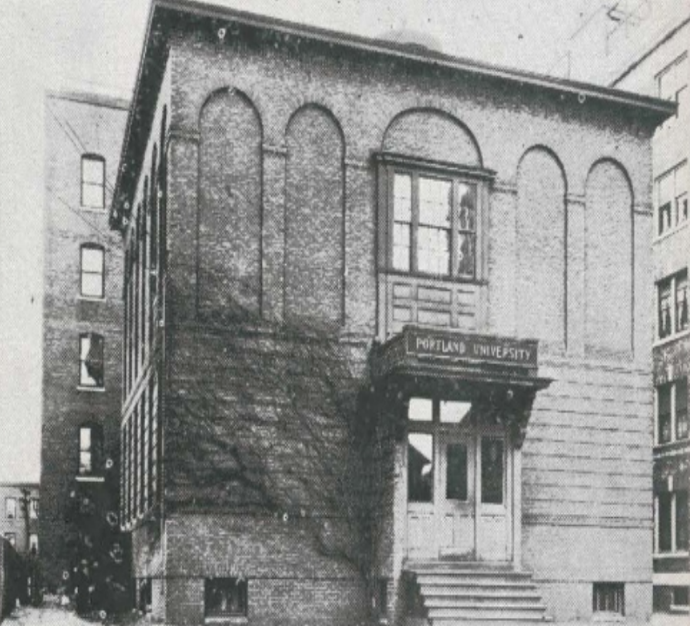By: Amelia Bodge, Staff Writer
While Gorham Normal School was now up and running, Portland decided to get into the business of higher education.
Portland University was incorporated in August 1921 by local businessman, Earl H. Cunningham. Cunningham believed Maine had a lack of training programs for accountants.
According to Joyce K. Bibber, author of University of Southern Maine, Cunningham had been giving private tutoring sessions in accounting. This led him to the idea of opening the university and with the help of two other men he planned the new nonresidential university.
The first home for the new University was the upper floor of the Benoit Building in monument square. But, a year later the university was relocated to 135 Chadwick Street.
The first catalog for the university offered only two programs, a three-year course in accounting and a two-year secretarial course. The college programs were offered to both men and women. By 1925 there were about 100 students enrolled.
More programs like Bachelor’s degrees in secretarial science and commercial science were proposed for 1926, but due to the financial troubles facing many people in the U.S at that time, the school closed instead.
In 1933, local educators and officials from the Portland YMCA suggested making college-level classes that would be available to low income students who could not afford to go elsewhere to study. This program evolved to what was called the Portland Junior College.
In exchange for students becoming members of the YMCA, the program offered space for classes and and even sports in the facility. The building was originally built on Forrest Avenue by local architect John P. Thomas.
The organization offered first-year programs in liberal arts and business modeled after similar programs at Boston University. The college had only five full-time professors and a few adjunct faculty, but it was so popular they soon added a second-year to the business program, upon students request.
Enrollment did not only consist of students from the Portland area. The YMCA offered housing so the college was able to accomodate students from all over the state. Increased enrollment encouraged the formation of student organizations. Among these organizations was a student newspaper called PJC News.
This increase wouldn’t last forever and numbers would drop again due to students leaving to go fight in World War II or help with the wartime effort. By 1943 there were only 14 students enrolled and it closed down.
Dean Luther Bonney tried to keep the college together by mailing copies of PJC News to former students, including news concerning faculty and alumni.
In mid-1945, plans to reopen the college were discussed, and by 1946 the school was again educating students.
Portland University opened its doors with an expanded list of programs, including a new degree in law.
According to Joyce K. Bibber, many ex-servicemen needed education and the board of trustees reopened Portland Junior college for males only. They also added pre-college programs for men who had joined the service before completing high school.
The program bounced around until a permanent spot was located. In late 1946 about six acres of the Deering Estate were purchased as a new home for the college. The purchase included many buildings like a shed, a stable, and a small farmhouse. Many of which were remodeled into administrative buildings and classrooms. The stable was remodeled and became the new gymnasium.
The final graduating class from Portland Junior College earned their degrees in 1957. The school then began a merger with the University of Maine System.


Good article. Thanks. In the late 1980s I wrote an article about the history of the university…lots of microfiche research.
Thank you for this. My father was a professor at PJC from 1940-1942. I was born while he was there. I am currently trying to pull together a history of his life and this is very helpful.